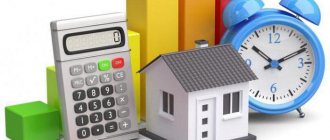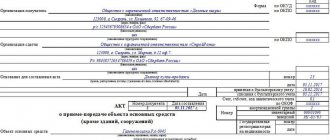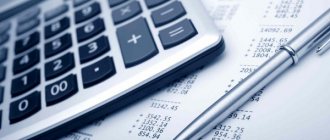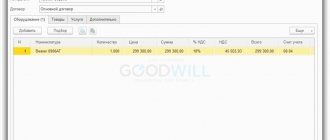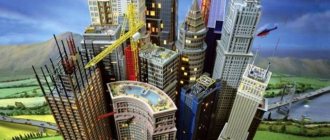Principle of working with score 08
According to Order No. 94n, to form the initial cost of a non-current asset, it is necessary to use accounting account 08.
This account allows you to accumulate all the costs that were associated with the creation, acquisition and development of new property of the institution. Costs can be grouped into five main sections:
- Fixed assets of the organization. Such objects include not only fixed assets on which depreciation is charged (buildings, transport, equipment), but also non-depreciable assets. Which? For example, land plots, subsoil.
- Intangible assets of an enterprise (patents, rights, intellectual property, all types of assets that do not have a physical shell, but generate profit and are used in business for more than 12 months).
- R&D results (relevant for research activities).
- Increasing the number of livestock (for agricultural enterprises).
- Development of natural resources. For example, which ones? Non-current exploration assets, exploration and exploration activities of the mining industry).
The first two groups are used almost everywhere, since fixed assets and intangible property are objects without which an economic entity will not be able to conduct its activities or it will be significantly difficult. The other three groups are less common. They are relevant for narrow specializations and types of economic activity.
What is reflected in accounting on account 08
Account 08 is intended for object-by-object accounting of costs of investments in the property of an enterprise, which will serve it as means of production for a long time.
The costs of reconstruction and modernization of such property are also taken into account. Important! From 01/01/2022, accounting for capital investments will be regulated by the new FSBU 26/2020. You can start applying the standard early. Find out what needs to be changed in accounting and accounting policies from the Review from ConsultantPlus. Trial access to the system can be obtained for free.
These costs, based on the nature of further use of the property, can be divided into 5 groups:
- fixed assets, including those not subject to depreciation (for example, land);
- intangible assets;
- R&D;
- development of natural resources;
- increasing the herd in livestock farming.
If the last 3 groups are relatively rare, then almost every organization deals with the first 2.
According to the method of acquisition, property can be:
- purchased, and it does not require additional investments for commissioning;
- received free of charge or as a contribution to the management company;
- entirely created by the organization itself;
- created (built) over a long period of time by a third party;
- created in a mixed way: something was purchased or made by contractors, and something was done by the enterprise’s own resources.
For information on accounting for transactions related to the authorized capital, read the article “Maintaining accounting records of the authorized capital (nuances).”
Subaccounts 08 accounts
The current accounting regulations provide for the opening of additional sub-accounts, which will allow for more detailed systematization and structuring of information on investments in non-current assets of the enterprise.
You can open separate sub-accounts for account 08 “Investments in non-current assets”.
| Number and name of the subaccount to account 08 | What do we include in the calculation? |
| 08-01 “Purchase of land” | We reflect the costs of the enterprise associated with the acquisition of land plots. |
| 08-02 “Purchase of natural resources” | We generate information on the acquisition of environmental management facilities, with the exception of land plots. |
| 08-03 “Construction of fixed assets” | On account 08-03 we accumulate information about the costs of an economic entity for the construction of fixed assets. |
| 08-04 “Acquisition of fixed assets” | We summarize the costs and expenses of the enterprise aimed at purchasing buildings, structures, equipment, transport and other fixed assets. |
| 08-05 “Acquisition of intangible assets” | We record information about the company’s expenses on the purchase of intangible property. |
| 08-06 “Transfer of young animals to the main herd” | Declaration of costs for raising young productive and working livestock in the organization, transferred to the main herd. |
| 08-07 “Acquisition of adult animals” | We reflect the cost of adult and working livestock purchased for the main herd. We also include expenses for shipping animals. |
| 08-08 “Performing research, development and technological work”, etc. | We reflect information on the expenses of an economic entity for conducting R&D activities and other types of technological research, research and development. |
The organization independently decides whether to open additional subaccounts or not. This decision must be justified in accounting policies. But maintaining separate analytics in the context of fixed assets and intangible property is mandatory.
Composition of non-current assets
Section 1 of the balance sheet reflects information about the organization's possible assets available.
Reflection of non-current assets in reporting
| Name of non-current assets | Check | Content |
| Intangible assets | 04 | Programs, cultural works, models, intellectual achievements, trademarks, business reputation |
| Results of developments and other research | 04 | Information on expenses for R&D and other types of work with a scientific focus |
| Intangible exploration assets | 04 | Work carried out by organizations when developing sites and assessing natural minerals |
| Material exploration assets | 04 | Property used for the development of natural mineral deposits |
| Fixed assets | 01 | Expensive property of organizations |
| Profitable investments in financial assets | 03 | Property used for rent or leasing for a certain fee |
| Financial investments | 58 | Securities, deposits, loans |
| Deferred tax assets | 09 | Temporary difference arising when calculating income tax |
| Other noncurrent assets | Other non-current assets that are not listed in other items |
The presented detailed list of non-current assets is used by organizations that prepare financial statements on a general basis. In a simplified reporting form, non-current assets are considered only according to two criteria: tangible and intangible. Their estimated value is reflected in the balance sheet at the end of the reporting period.
| ★ Best-selling book “Accounting from scratch” for dummies (understand how to do accounting in 72 hours) > 8000 books purchased |
Methods of receiving property
The volume of non-current assets of an enterprise is characterized not only by the property status of the economic entity, but is also used to analyze production capacity, profitability and financial stability in general. Consequently, the organization is directly interested in strengthening and expanding its property base. Moreover, acquiring property yourself is not the only way to strengthen logistics.
The following methods of receiving property are distinguished:
- purchase or acquisition;
- free admission;
- creation in-house;
- creation by third parties;
- mixed method.
Depending on the method of receipt of the asset, the composition of costs included in the initial cost of the property is determined.
Formation of initial cost
The procedure for forming the initial cost of an asset is a list of costs, which is reflected in account 08 in accounting. The current PBU standards determine a specific list of institution costs that can be included in the initial cost of an asset. That is, they are reflected on account 08. The composition of such costs depends on the method of receipt of the asset into the ownership of the organization.
Here is a general list of the enterprise’s expenses for the receipt of property, which is taken into account in account 08 in accounting:
- The accounting value of an asset (property, fixed assets, intangible assets, R&D objects), that is, the price that was directly transferred to the seller. Including customs duties, commission fees, taxes owed and extra charges included in the price and paid to the seller. VAT and other non-refundable taxes are also included. The amounts of refundable deductions, tax bonuses and benefits should be deducted from the price when determining the initial cost.
- The fair value of the asset as of the date of its receipt in the event of a gratuitous transfer of property into the ownership of an economic entity. For example, receipt of fixed assets from the founder or investor.
- Other expenses associated with the acquisition, creation, development of a new facility (transportation, installation, consultations, etc.).
Including:
- expenses for remuneration of personnel involved in the creation of property;
- insurance premiums accrued for wages;
- the cost of work to create assets, paid under contracts to third-party organizations, individual entrepreneurs and individuals (for example, remuneration under a construction contract);
- state duties and other payments to the budget related to the creation, acquisition or production of a non-current asset (SAI);
- payment of intermediary services paid to third parties;
- costs of shipment, transportation, delivery, assembly, preparation, installation and other actions to bring the SAI into a condition suitable for operation;
- expenses for carrying out control activities to verify the readiness and proper functioning of the SAI;
- payment for materials, components and raw materials used to create or manufacture the VOA;
- payment of interest on installment payments to pay the cost of the asset;
- information, consulting and other support services;
- other types of services related to the creation or acquisition of objects, for example, payment for state construction supervision.
These costs of the enterprise, and along with them the accounting value, are reflected in the debit of the account. That is, debit turnover forms the initial cost. Credit turnover is formed immediately at the time the asset is accepted for accounting or at the time it is sold by a third-party company. In other words, the initial cost of the property is written off to a corresponding accounting account. For example, on the account. 01 “Fixed assets” when accepting fixed assets for accounting.
Accounting entries for investments in non-current assets (Account 08)
The receipt of goods or intangible assets on the balance sheet of the organization is carried out taking into account all the costs of their acquisition.
This may include installation, delivery and other related costs. The total resulting value of non-current assets is not subject to change, with the exception of possible cases of revaluation, completion, reconstruction and others.
Acceptance of fixed assets or intangible assets for accounting is accompanied by the determination of their useful life. Depending on the decision made, depreciation is calculated monthly, which reduces the initial cost of the object.
When registering intangible assets, there are options for determining and not determining the useful life. The useful life must be determined annually. The same applies to depreciation charges for intangible assets.
If fixed assets are considered in the future as an additional source of income reflected in account 03, then depreciation on them is accounted for separately in the general account for fixed assets - 02.
Tangible and intangible exploration costs involved in the development of deposits of natural minerals and other activities related to the development of natural resources are assessed based on the amount of actual costs incurred, which include:
- amounts paid to suppliers and intermediaries under the terms of contracts;
- consulting fees;
- customs payments;
- non-refundable taxes;
- remuneration of employees involved in development;
- depreciation of operating systems used to create search assets;
- other costs associated with activities of this kind.
The listed types of expenses do not include amounts of refundable taxes, as well as general business expenses, with the exception of situations where they are directly involved in the development of deposits and for performing other operations with minerals.
If the feasibility of development is subsequently confirmed, non-current exploration assets are transferred to the category of fixed assets or intangible assets on a general basis. Otherwise, further costs are stopped and the resulting assets are written off or disposed of.
Dt 08 - Kt 60, 76 - the organization acquired fixed assets (intangible assets, other non-current assets)
Dt 19 - Kt 68 - allocated VAT on the purchase of property.
Dt 01 (03, 04) - Kt 08 - the object was accepted for registration (put into operation).
Example. The company purchased equipment for production needs for a total cost of 637,200 rubles, including 18% VAT. The equipment has been registered. What will the wiring look like?
Dt 08 - Kt 60 (RUB 540,000) purchase of fixed assets.
Dt 19 - Kt 60 (97,200 rub.) VAT is reflected upon purchase.
Dt 01 - Kt 08 (RUB 540,000) equipment put into operation.
Kt 68 ― Dt 19 (RUB 97,200) VAT payable.
The main documents that an accountant needs to follow when working with the 08th account:
- Order of the Ministry of Finance of the Russian Federation dated October 31, 2000 No. 94n “On approval of the Chart of Accounts for accounting of financial and economic activities of organizations and instructions for its application” (hereinafter referred to as Order No. 94n);
- “Instructions for the application of the Chart of Accounts for accounting financial and economic activities of organizations”, approved by Order of the Ministry of Finance of the Russian Federation dated October 31, 2000 No. 94n (hereinafter referred to as Instruction 94n);
- PBU 6/01;
- PBU 17/02.
Accounting account 08 is designed to accumulate data on enterprise investments in tangible and intangible non-current assets, which in the future can be recorded in accounts 01, 03, 04 as fixed assets, intangible assets or profitable investments, respectively. Today, order No. 94n established eight subaccounts to account 08.
IMPORTANT! In the working chart of accounts, an enterprise can clarify the contents of the list of second-order accounts (sub-accounts), excluding or merging them. If necessary, additional subaccounts can be introduced if this is required by the specifics of the activity or such introduction is dictated by the need to deepen its control and analysis.
According to Order No. 94n, subaccounts 1, 2, 4, 5 and 7 to account 08 are intended to account for investments in finished non-current assets. Account 08-1 is intended for synthesizing data on capital investments of an enterprise for the acquisition of land plots. Investments in environmental management facilities are accounted for in subaccount 08-2.
Subaccount 3 is intended to accumulate information on the construction of environmental facilities, and subaccount 6 takes into account the costs of raising young animals before transferring them to the main herd. The 8th subaccount takes into account expenses associated with research, design work, and the development of new technological and management processes.
Analytical accounting for accounts 08-1, 08-2, 08-3, 08-4, 08-5 is maintained for each fixed asset (purchased or constructed). According to accounts 08-6 and 08-7 - for each species (group) of animals. According to account 08-8 - for each type of work (service) or R&D.
You can clarify the procedure for reflecting the balance of account 08 in the balance sheet in the material “On which line should the balance of account 08 be reflected in the balance sheet?”
In accordance with the order of the Ministry of Finance of the Russian Federation “On approval of the Chart of Accounts” dated October 31, 2000 No. 94n (hereinafter referred to as the chart of accounts) account. 60 “Settlements with suppliers and contractors” is used to record transactions for the following business relationships with suppliers:
- acquisition of inventory items;
- acceptance of completed work;
- consumption of services provided;
- uninvoiced deliveries.
- other operations that are reflected in account 60 and provided for by the chart of accounts.
At the same time, for detail and correct reflection of information on transactions, sub-accounts to account 60 are used. An important point when opening sub-accounts is the need to secure them in the company’s working chart of accounts, which is approved by the accounting policy.
For recommendations on drawing up a working chart of accounts, see the material “Working Chart of Accounts - Sample 2017”.
Let's look at examples of possible subaccounts to account 60:
- 60.01 - settlements with suppliers and contractors;
- 60.02 - settlements for advances issued;
- 60.03 - settlements on bills issued;
- 60.04 - settlements for uninvoiced deliveries.
It is also possible to open other sub-accounts regulated by the company’s working chart of accounts.
In the form of non-current assets, fixed assets with intangible assets and investments of a financial nature act. Account 08 is intended to systematize information about non-current assets upon receipt in the absence of a final price for them or conditions for immediate commissioning.
After the process of calculating the final price for the asset is completed, the 08 accounting account is closed by transferring amounts from it to the appropriate accounts. If the price is known immediately after the transaction for the purchase of an object and its change is not expected, then the account. 08 will play a transit role.
The cost of the property is taken into account in the amount of additional costs for installation, delivery and modification of the asset. An important nuance - the VAT amounts for each object should be attributed to account 19. The answer to the question “08 account - active or passive” is unambiguous - the account is active. That is, all incoming amounts are recorded as a debit, and disposals are recorded as a credit.
Accounting account 08 includes assets that:
- used in the form of a contribution to the authorized capital;
- acquired;
- received free of charge;
- created economically or by intermediaries.
The balance sheet for account 08 will help ensure the correctness of accounting records regarding investments in non-current assets. If the turnover in it is equal, the balance is zero, then the accountant did everything without errors. When a balance appears, it is necessary to pay attention to the presence or absence of unfinished construction at the enterprise.
Non-current assets are subsequently accepted for accounting and tax accounting as a fixed asset, land plot, environmental management facility or intangible asset.
The main aspect of using subaccount 08.03 “Construction of fixed assets” is that the subaccount reflects:
- All costs for the construction of buildings and structures;
- Equipment installation costs;
- Other expenses indicated in the financial estimates for capital construction by contract or business method:
The contract method of construction is construction work and installation work performed in accordance with the concluded construction contract (Articles 740, 743, 746 of the Civil Code of the Russian Federation).
The economic method of construction is construction work and installation work performed by the organization’s employees.
Interaction with other accounting accounts
Account 08 is often used in the preparation of correspondence with separate accounting accounts. Let's consider controversial situations.
| Corresponding account | The essence of the operation |
| Account 07 “Equipment for installation” | Account 07 reflects information about the cost of equipment that cannot be operated without special installation or assembly work. To recognize such expenses as part of the initial cost of property, documentation is required. Form OS-15 or another format approved by the organization is used. Wiring:
|
| Account 20 "Main production" | Account 20 is used in correspondence with account 08 if the organization decided to use part of its independently produced products in its activities. Then the finished product at its actual cost is credited to account 08, from which the facility will be put into operation as a VOA produced in-house. Unfinished objects of the SAI for its own needs can be written off by reverse posting:
|
| Account 76 “Settlements with various debtors and creditors” | Used to reflect various types of costs that should be hidden in the original cost of the property. For example, make a wiring:
|
| Account 79 “Intra-economic settlements” | Use account. 79 to reflect calculations within the organization. For example, between structural divisions allocated to a separate independent balance sheet. Wiring:
Or:
|
| Account 94 “Shortages and losses from damage to valuables” | On the account 94 include losses and shortages in relation to property, regardless of the perpetrators. The postings are made in the following order:
|
Which accounts does it correspond with?
Account 08 can correspond with the following accounts.
From the debit of account 08 to the credit of accounts:
- Account 02 - when calculating depreciation of fixed assets that are used for modernization or creation of other operating systems;
- Account 05 - when calculating depreciation of intangible assets that were used to create other fixed assets or intangible assets;
- Account 07 - regarding the cost of equipment that was transferred for installation at the site;
- Account 10 - regarding the cost of materials that were used for the construction or modernization of the OS facility;
- Count 11 - when transferring young animals to the main herd;
- Account 16 - regarding the deviation in the price of inventories that were used in the creation of the fixed asset;
- Account 19 - when writing off VAT tax, which is not subject to reimbursement from the budget;
- Account 23 - when writing off the costs of auxiliary production to increase the cost of the capital investment object;
- Account 26 - when writing off general business expenses to increase the value of the capital investment object;
- Account 60 - when reflecting non-current assets received from suppliers, reflecting construction costs;
- Account 66 - when calculating interest on short-term loans and credits with the help of which the capital investment object was acquired (until it was accepted for operation);
- Account 67 - when calculating interest on long-term loans and credits with the help of which the capital investment object was acquired (until it was accepted for operation);
- Account 68 - when writing off amounts of non-refundable taxes on a capital investment object;
- Account 69 - when reflecting the accrual of social contributions on the salaries of workers who were involved in work with the object of capital investment;
- Account 70 - when calculating wages to employees who were involved in work with the investment object;
- Account 71 - when writing off expenses for accountable persons for a capital investment object;
- Account 75 - when one of the founders of the capital investment object makes a contribution to the authorized capital;
- Account 76 - when reflecting other services related to the commissioning of a capital investment facility;
- Account 79 - upon receipt or transfer of capital investment objects to the parent organization or branch;
- Account 80 - when transferring a capital investment object as a contribution under a joint activity agreement;
- Account 86 - upon receipt of a capital investment object in the form of investments or financing;
- Account 91 - when capitalizing MTs that were identified as a result of inventory and are intended for use when working with a capital investment object;
- Account 94 - the amounts of previously identified shortages and losses are written off to the capital investment object;
- Account 96 - when creating reserves at the expense of the investment object;
- Account 97 - deferred expenses are written off to the cost of the capital investment object;
- Account 98 - capital investment items received for free are taken into account.
You might be interested in:
Order of payment in a payment order: what to put in field 21 in 2021
According to the credit of the account, it corresponds with the debit of the following accounts:
- Account 01 - when commissioning a capital investment as an OS object;
- Account 03 – when commissioning a capital investment that is supposed to be rented out;
- Account 04 – when commissioning a capital investment as an intangible asset;
- Account 76 - when writing off part of the cost of capital investment as insurance compensation, when making claims to contractors, etc.
- Account 79 – upon receipt or transfer of capital investment objects to the parent organization or branch;
- Account 80 - upon return of the investment object upon termination of the joint activity agreement;
- Account 91 - when writing off losses, selling part of the capital investment, disposal, etc.
- Account 94 - identified shortfalls or losses in investments in assets are written off;
- Account 99 - writing off part of the cost of the investment object as a loss (as a result of an emergency, natural disaster, etc.)
Depreciation of investments in SAI
The question of whether depreciation is calculated from the 08th account remains relevant to this day. Until the object is accepted for accounting, depreciation is not accrued. Why? In accordance with Instruction No. 94n, depreciation on fixed assets and intangible assets is accrued only from the month following the month in which the organization accepted the property for accounting. Consequently, depreciation cannot be charged on objects that are at the stage of investment in SAI.
After accepting the property for accounting, depreciation should be calculated using the method that was enshrined in the accounting policy of the institution.
Where is account 08 reflected in the balance sheet?
If at the end of the reporting period there is a debit balance on account 08, then this indicator should be included in the active part of the balance sheet. Account 08 in the balance sheet: which line we reflect on depends on the type of property. Table:
| Line | What should be done |
| Balance line 1110 | Reflect in the balance sheet field the debit balance of account 08 in relation to investments in intangible assets. |
| Line 1120 | Include information in the balance sheet on investments in R&D, listed in account 08 as a debit at the end of the reporting period. |
| Line 1130 | We reflect investments in the development of deposits, subsoil and other types of intangible exploration assets. |
| Line 1140 | We disclose information about investments in the development of deposits of a material nature (material exploration assets). |
| Line 1150 | Account balance 08 regarding investments in fixed assets. Include the debit balance in the appropriate line of the balance sheet. |
| Line 1190 | Include information about investments in assets not disclosed in the SAI grouping of the balance sheet. |
For example, if the debit balance is on OS, then reflect the amount of investments in SAI on line 1150 of the balance sheet. If the organization’s accounting records a debit balance for R&D objects, fill out line 1120 of the balance sheet. For investments in intangible property, enter the value of the debit balance in line 1110 of the balance sheet.
